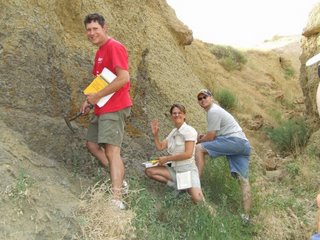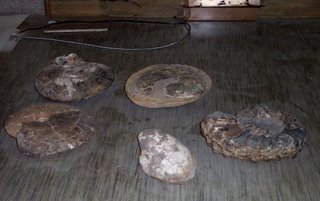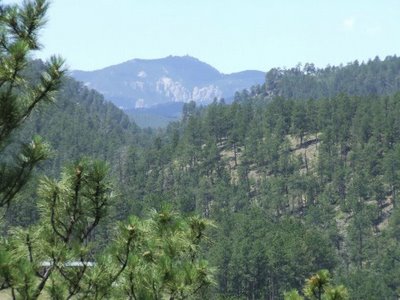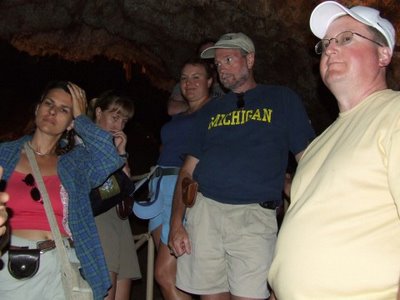
As hot as it will get here next week in southeast Michigan, it won't feel like it did this day of the Big Hike. Toasty, crispy warm with a breeze that drew the sweat right out of your skin. We hiked straight up the crumbling clay, down again and then marched along the open dry plain, watching for rattlers and cacti, wondering how long the hike really would be, and wondering if our spare water jugs would still be somewhere south of boiling in the minivans.
They weren't. This was the day Allison and I gave our paper on the K-T boundary. After the Hike. After the seeming endless trek into hot winds, dry grasses and astoundingly desolate landscape.

We managed to recover our wits in the five minute drive to the spot where we could see the K-T boundary. This is the famous edge of life, the time spanning the age of the Dinosaurs, ammonites and about 65% of other species on earth. Above the K-T boundary, there are no dinosaur bones. There are no ammonites, there are no psauropods. All gone.


So what do we find in the K-T boundary? Weird stuff, mixed with a more-than-normal amount of the rare element Iridium. Ir is related to platinum, and it's that rare. Not so rare in outer space, however, and it is most likely that the relatively copious amounts of that element found in the K-T boundary is from outer space. Aliens? No, asteroids. Is that what killed the dinosaurs? A giant wad of stone and dust from outer space? It's possible. Asteroid collisions do nasty things to the earth.
I love the earth!

The little white thing you see in the crumbling clay is a deer's butt.
Look what else the earth looks like!

Here's what it looks like on the inside!

It was nice and cool in the cave. Yes, that's me wearing a flannel shirt. I was glad I brought it to South Dakota in July. Though it was in the high 90s outside, it was in the 50s in Rushmore Cave. I prefer the 90s, but that's just me.

Later on...

I was teaching everyone the "Happy George, Sad George" trick with a dollar bill. Luckily Jay had the whole gamut of bills in his wallet so we continued on in the same manner with Hamilton, Jackson, and Grant...what fun. It was even more fun watching Rachel laugh everytime we did it! Jay even had Ben Franklin! Go Jay- drinks all around!
Not fun: Dr. Murray handing me the van keys bright and early the next morning. First shift? Sweet.



